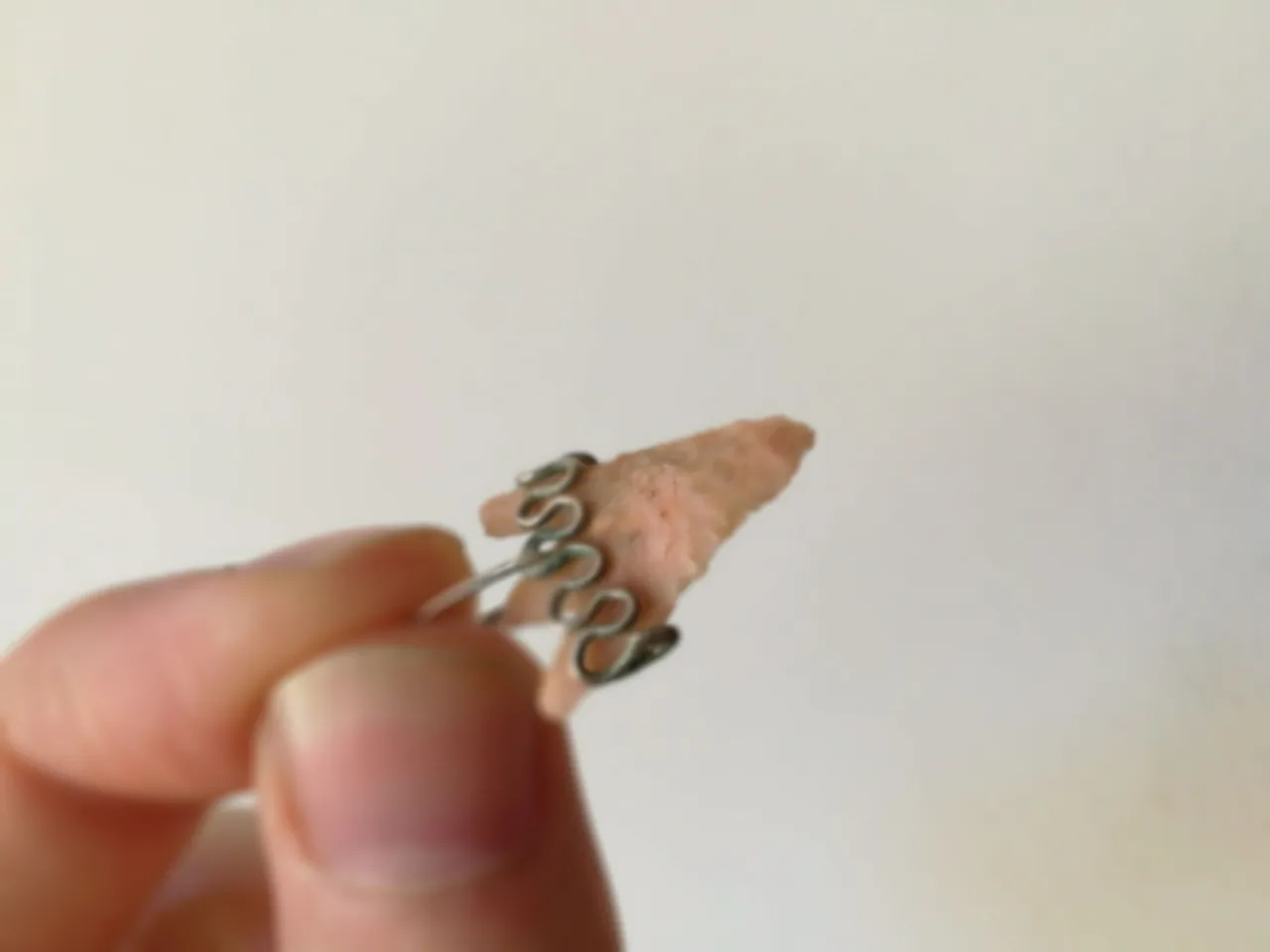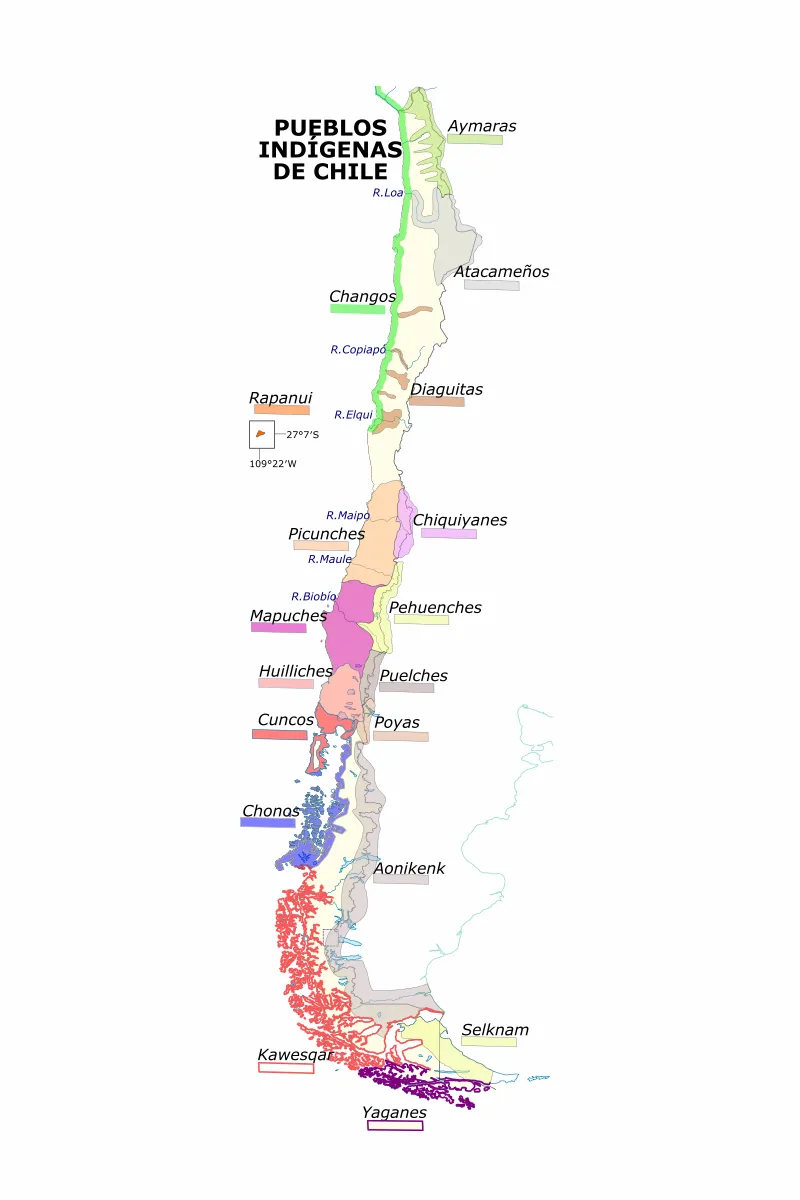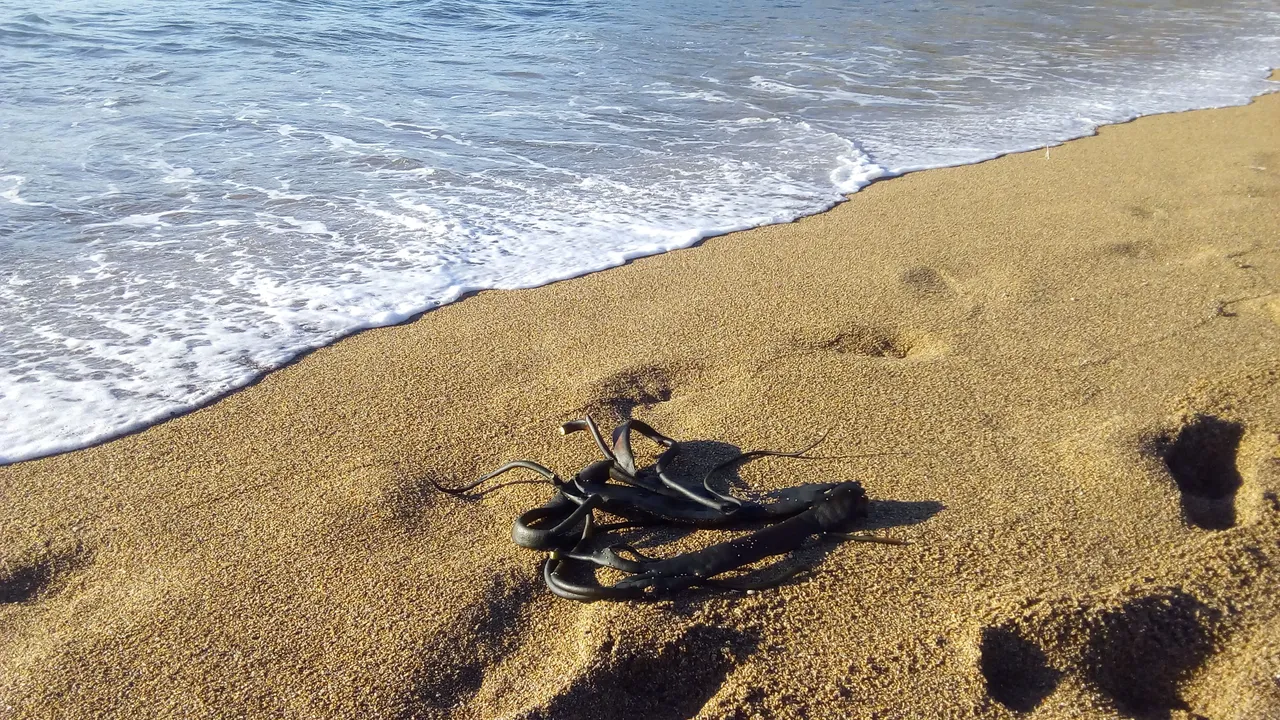
Punta di freccia Changos, con montatura metallica // Changos arrowhead, with metal frame
Qualche giorno fa, all’uscita del supermercato, ho incontrato uno zio di @cryptowife che mi ha consegnato un piccolo regalo che mi aveva promesso da tempo. Si tratta di una punta di freccia che gli indigeni della costa cilena usavano migliaia di anni fa per cacciare volatili. O forse anche solo centinaia di anni fa, prima dell’arrivo degli spagnoli, insomma. Mi ha detto che l’ha trovata per caso, poco lontano dalla spiaggia in cui ha lavorato. “La usavano i miei antenati, los Changos”.
A few days ago, while getting out of the supermarket, I bumped into an uncle of @cryptowife. "Here's the gift that I promised you", he told me. It is an arrowhead that the natives of the Chilean coast used thousands of years ago to hunt birds. Or maybe even just hundreds of years ago, before the arrival of the conquistadores, in short. He told me that he found it by chance, not far from the beach where he worked. "My ancestors used it, los Changos".
Chi erano i Changos? // Who were the Changos?
Changos vengono denominati diversi popoli indigeni (o precolombini) che abitavano la costa occidentale del Sudamerica, dal Perù alla zona centro-settentrionale del Cile. Era un popolo che viveva principalmente di pesca e di raccolta dei molluschi. Date un'occhiata alla loro pagina su Wikipedia.
Changos are called several indigenous (or pre-Columbian) peoples who inhabited the west coast of South America, from Peru to the central-northern area of Chile. It was a population who lived mainly on fishing and gathering seaweed and shellfish. Take a look at their page on Wikipedia.

Parlando dei popoli indigeni del Cile,mi ha colpito scoprire che rappresentino una grande comunità che resta in gran parte isolata e con frequenti problemi di integrazione.
Meglio: quello che colpisce non è tanto il fatto che non si siano integrati al resto della società, quanto il fatto che la proprietà stessa delle terre in cui vivono sia ancora una questione irrisolta.
Tra i diversi gruppi indigeni, quello che si sente nominare più spesso è quello dei Mapuche, che abitano nella zona centro-meridionale del paese, nella regione dell'Araucania. Sono circa 1.100.000 e quindi rappresentano un'ampia fetta della popolazione cilena (18 milioni in totale, circa).
Molto spesso nei telegiornali si ascoltano le notizie dei loro attacchi terroristici coi quali rivendicano la proprietà delle terre.
Secondo un recente articolo del quotidiano La Nacion, dal 2014 al 2017 sono stati registrati 797 attacchi terroristici mapuche (fonte).
Speaking of the indigenous peoples of Chile, I was struck by the discovery that they represent a large community that remains mostly isolated and with frequent integration issues.
Better: what I find peculiar is not the fact that they are not integrated with the rest of society, but that the very property of the lands in which they live is still an unsolved issue.
Among the various indigenous groups, what we hear most often is that of the Mapuche, who live in the central-southern part of the country, in the region of Araucania. They are about 1,100,000 and therefore represent a large part of the Chilean population (18 million in total, approximately).
We hear quite often in the news about their terrorist attacks with which they claim ownership of land.
According to a recent article in the newspaper La Nacion, from 2014 to 2017, Mapuche stroke 797 terrorist attacks (source).
Ieri e oggi // Yesterday and today

Un piccolo pezzo di cochayuyo // A small piece of cochayuyo
A proposito, anche il lavoro del Lele (così si chiama lo zio che mi ha regalato la punta di freccia) è molto particolare. Per diversi mesi l’anno, lascia la sua casa e i suoi figli e parte verso il Nord del Cile per raccogliere il cochayuyo. Si tratta di un’alga (Durvillaea Antarctica) di grandi dimensioni (fino a 15 metri di larghezza) che il mare trascina verso riva. Lui e altri raccoglitori trascorrono gran parte del giorno con l’acqua alla cintola, lanciando un arpione e trascinando verso riva questi grosse matasse che lasciano seccare al sole e poi vendono. Come un tempo rappresentava una fonte di cibo per gli indigeni, ancora oggi rappresenta un ingrediente importante della cucina cilena. L'anno scorso l'ho mangiato e mi è piaciuto mangiarlo, non tanto per il gusto al quale non sono tanto abituato, quanto perché dicono che sia pieno di nutrienti. In gran parte però viene esportato verso Taiwan, dove viene usato soprattutto come ingrediente che dà viscosità ai cosmetici.
A parte la globalizzazione, mi piace pensare che quest'alga che gli indigeni raccoglievano continui a rappesentare ancora oggi una fonte di sostentamento per alcuni cileni. Cambiano i tempi e i modi, ma l'Oceano Pacifico continua a regalare loro risorse.
Mi ha promesso il Lele che questa settimana potremo fare una intervista con lui, per parlarci ancora dei Changos e del loro modo di vivere.
By the way, Lele's job (this the name of the uncle who gave me the arrowhead) is quite special. For several months a year, he leaves his home and his children and travel to the north of Chile to collect the cochayuyo. This is a large alga (Durvillaea Antarctica, up to 15 meters wide) that the sea drags to the shore. He and other gatherers spend most of the day in the water, throwing a harpoon and dragging these large skeins to shore, leaving them to dry in the sun and then sell. As it once represented a food source for the natives, it is still today an important ingredient in the Chilean cuisine. I ate it last year and enjoyed it, not because of the taste (I'm not used to eating algae), but because they say it's full of nutrients. Mostly, however, it is exported to Taiwan, where it is mainly used as an ingredient that gives viscosity to cosmetics.
Apart from globalization, I like to think that this seaweed that the natives were harvesting continues to represent a source of income for some Chileans. Times changes, but the Pacific Ocean continues to provide resources for many of them.
Lele promised me that this week we will have an interview, to talk about the Changos and their way of life.

Salvo dove diversamente indicato, le foto sono di mia proprietà // Where not specified, the photos have been taken by me.